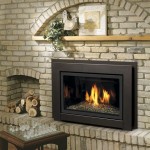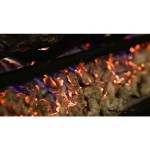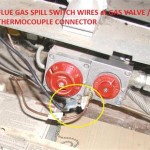What is a Fireplace Insert?
A fireplace insert, also known as a stove insert, is a self-contained heating appliance designed to fit within an existing masonry or prefabricated fireplace. It offers a more efficient and controlled heating experience compared to traditional open fireplaces. Rather than losing a significant portion of heat up the chimney, an insert directs heat into the room, improving both comfort and energy efficiency.
Fireplace inserts are available in a variety of fuel types, including wood, gas, and electricity, allowing homeowners to select the option that best suits their needs, budget, and existing infrastructure. Each fuel type offers distinct advantages and disadvantages in terms of heating capacity, cost, and environmental impact. The primary function of a fireplace insert is to convert an existing, inefficient fireplace into a viable and effective heating source.
The installation of a fireplace insert typically involves sliding the unit into the existing fireplace opening and connecting it to a chimney liner. The chimney liner is a crucial component, as it ensures proper venting of combustion byproducts and prevents potential hazards such as carbon monoxide poisoning. Professional installation is highly recommended to ensure safe and efficient operation.
Key Point 1: Benefits of Using a Fireplace Insert
One of the most significant advantages of using a fireplace insert is its improved efficiency. Traditional open fireplaces are notorious for their low efficiency ratings, often losing 80-90% of the heat generated up the chimney. Fireplace inserts, on the other hand, are designed to maximize heat output and minimize heat loss. They typically achieve efficiency ratings ranging from 60% to 80% or even higher, depending on the model and fuel type.
Enhanced efficiency translates to reduced energy costs. By directing heat into the living space instead of losing it up the chimney, a fireplace insert can significantly lower heating bills, particularly during cold weather. This makes them a cost-effective alternative or supplement to central heating systems.
Furthermore, fireplace inserts offer greater control over heat output. Unlike open fireplaces, which can be difficult to regulate, inserts typically feature adjustable controls that allow homeowners to precisely manage the amount of heat produced. This makes it easier to maintain a comfortable temperature in the room and prevents overheating.
Another benefit is the reduction of pollution. Modern fireplace inserts, especially those that are EPA-certified, are designed to burn fuel more cleanly, reducing emissions of smoke, particulate matter, and other pollutants. This makes them a more environmentally friendly heating option compared to traditional open fireplaces, which contribute to air pollution.
Finally, fireplace inserts offer enhanced safety features. Many models include features such as sealed combustion chambers, which prevent carbon monoxide from escaping into the home. They also typically have glass doors that keep sparks and embers contained, reducing the risk of fire hazards. These safety features provide peace of mind, particularly for families with children or pets.
Key Point 2: Types of Fireplace Inserts
Fireplace inserts are categorized based on the type of fuel they use: wood, gas, and electricity. Each type has its own characteristics and advantages.
Wood-burning inserts are popular for their traditional aesthetic and the ambiance of a real wood fire. They provide a significant amount of heat and can be a cost-effective heating option in areas where wood is readily available. However, wood-burning inserts require manual fueling and regular maintenance, including ash removal. EPA-certified wood inserts are designed to burn wood more efficiently and cleanly, reducing emissions and complying with environmental regulations.
Gas fireplace inserts are known for their convenience and ease of use. They can be ignited with the push of a button and offer precise temperature control. Gas inserts are available in both natural gas and propane models, providing flexibility for homeowners. They require a connection to a gas line and professional installation is recommended to ensure safe operation. While gas inserts may not provide the same ambiance as wood-burning models, they offer a clean and efficient heating solution.
Electric fireplace inserts are the simplest to install and operate. They require no venting and can be plugged into a standard electrical outlet. Electric inserts are primarily used for supplemental heating and aesthetic purposes. They offer a realistic flame effect and can provide a comfortable level of warmth for smaller spaces. Electric inserts are a safe and convenient option for those who want the look and feel of a fireplace without the hassle of fuel or venting.
Key Point 3: Installation and Maintenance
Proper installation is crucial for the safe and efficient operation of a fireplace insert. It is highly recommended to have a qualified professional install the insert, ensuring that it is properly connected to the chimney liner and that all safety requirements are met. Incorrect installation can lead to fire hazards, carbon monoxide poisoning, and poor performance.
The chimney liner is an essential component of the installation process. It is a metal pipe that runs through the existing chimney and vents combustion byproducts safely to the outside. The liner must be properly sized and installed to prevent leaks and ensure adequate draft. A professional installer will assess the condition of the existing chimney and recommend the appropriate liner for the insert.
Regular maintenance is also necessary to keep the fireplace insert operating efficiently and safely. The frequency and type of maintenance will vary depending on the fuel type and usage patterns. However, some common maintenance tasks include:
For wood-burning inserts, regular ash removal is essential to prevent ash buildup, which can reduce airflow and efficiency. The chimney should also be inspected and cleaned annually by a qualified chimney sweep to remove creosote, a flammable substance that can accumulate in the chimney and cause a fire.
For gas fireplace inserts, annual inspection and cleaning by a qualified technician is recommended. The technician will check the gas connections, burner, and venting system to ensure proper operation and identify any potential problems.
For electric fireplace inserts, maintenance is minimal. However, it is important to keep the unit clean and free of dust and debris. The heating element and fan should be inspected periodically to ensure they are functioning properly.
Following the manufacturer's instructions for operation and maintenance is crucial for maximizing the lifespan and performance of a fireplace insert. Ignoring these instructions can lead to premature wear and tear, reduced efficiency, and safety hazards.
In addition to the aforementioned points, it is important to consider the size and heating capacity of the insert when selecting a model. The size of the room to be heated, insulation levels, and climate conditions should all be factored into the equation. Choosing an insert that is too small may not provide adequate heat, while an insert that is too large may overheat the room. Consulting with a qualified dealer or installer can help determine the appropriate size and heating capacity for a specific application.
The aesthetics of the fireplace insert are also an important consideration for many homeowners. Inserts are available in a variety of styles and finishes to complement different décor styles. Some models feature realistic flame effects and decorative logs, while others offer a more modern and minimalist design. Selecting an insert that blends seamlessly with the existing fireplace and room décor can enhance the overall aesthetic appeal of the space.
Finally, researching and comparing different brands and models of fireplace inserts is essential to making an informed decision. Reading reviews, comparing specifications, and consulting with experienced professionals can help identify the insert that best meets individual needs and preferences. Investing in a high-quality fireplace insert can provide years of reliable and efficient heating, enhancing the comfort and value of the home.

What S Best A Fireplace Stove Or Insert We Love Fire

Fireplace Insert Guide Fireplaces Direct Learning Center

Why A Wood Burning Fireplace Insert Bethesda Md Service

What S The Difference Between Fireplaces Vs Fireplace Inserts

Why Choose A Fireplace Insert Made In America Xtrordinair

What Is A Fireplace Insert And How Does It Work

Fireplaces Vs Inserts Dc Area Fireplace Service

Wood Burning Fireplace Inserts Insert Installation

What Is A Gas Insert Comfort By Design

Fireplace Insert Installation Wood Inserts Gas Pellet And Electric








